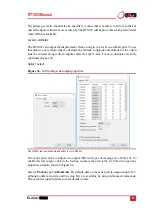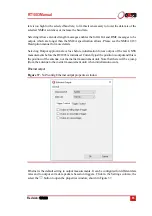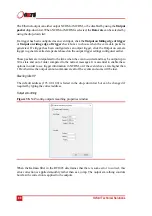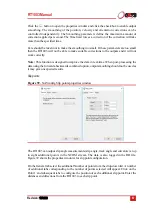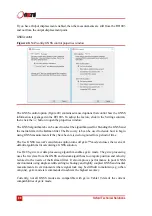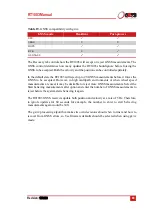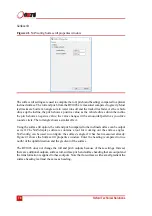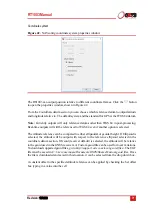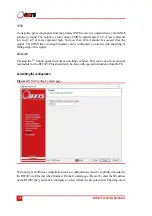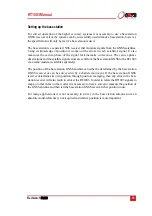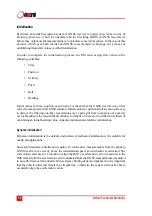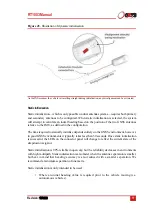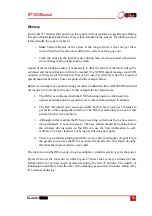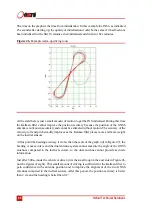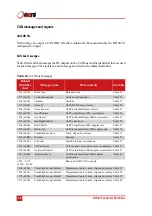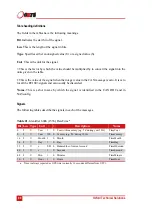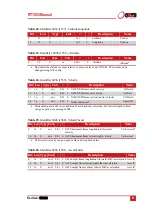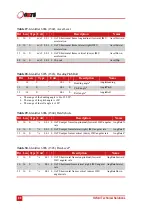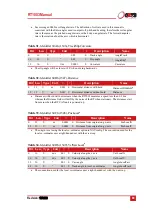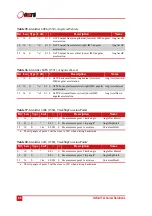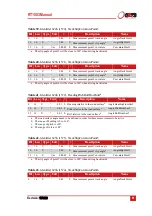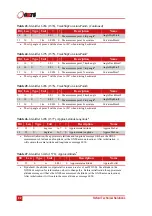
RT1003 Manual
Revision:
190628
77
Figure 45.
Illustration of dynamic initialisation
As the INS assumes the vehicle is travelling straight during initialisation, any misalignment can be estimated.
Static initialisation
Static initialisation—which is only possible on dual antenna systems—requires both primary
and secondary antennas to be configured. When static initialisation is selected, the system
will attempt to calculate an initial heading based on the position of the two GNSS antennas
relative to the IMU, as defined in the configuration.
The time required to statically initialise depends entirely on the GNSS environment, however,
in good GNSS environments it typically takes less than 30 seconds. Once static initialisation
is successful, the LEDs on the connector panel will change to reflect the current state of the
strapdown navigator.
Static initialisation is 99% reliable in open sky, but the reliability decreases in environments
with high multipath. Static initialisation is also faster when the antenna separation is smaller,
but bear in mind that heading accuracy is also reduced with a smaller separation. We
recommend a minimum separation of one metre.
Static initialisation is only intended to be used:
• Where an initial heading value is required prior to the vehicle moving (i.e.
autonomous vehicles).

